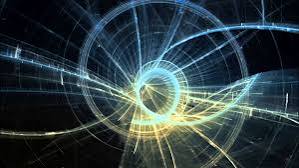Quantum mechanics is a field of science that began developing in the early 20th century, aiming to explain the behavior of matter and energy at microscopic scales. While classical physics successfully explains the movement of objects in daily life, it falls short in understanding the behavior of atoms and subatomic particles. Quantum mechanics presents a new theory to understand the microscopic world and allows for a deeper understanding of the laws of nature. This field has led to revolutionary changes in both science and technology, introducing ideas that were previously unimaginable.
Quantum mechanics not only explains the behavior of microscopic particles but also of light and energy. The principles in this field are in complete contradiction to classical physics. For example, in quantum mechanics, matter can be in several places or states at the same time, which does not align with traditional physical concepts. The quantum world is based on probabilities and uncertainties, while classical physics assumes the existence of stable and precise events.
The History of Quantum Mechanics
The foundation of quantum mechanics was laid in 1900 by Max Planck’s theory to explain black body radiation. Planck proposed that the energy of matter is not continuous but composed of discrete chunks, introducing the concept of “quanta.” This idea suggested that energy and matter exist in specific amounts and contradicted previous physical laws.
In 1905, Albert Einstein showed that light behaves both as a wave and a particle (photon) when explaining the photoelectric effect. This discovery paved the way for broader applications of quantum theory. In the 1920s, scientists such as Niels Bohr, Werner Heisenberg, Erwin Schrödinger, and Paul Dirac formulated the core principles of quantum mechanics. In 1925, Heisenberg introduced the uncertainty principle, showing that the position and velocity of a particle cannot be precisely measured simultaneously. This became one of the fundamental features of the quantum world.
Key Principles of Quantum Mechanics
Quantum mechanics involves many strange and unusual concepts, which help us understand various phenomena in the microscopic world. Below are some key principles of quantum mechanics:
1. Heisenberg’s Uncertainty Principle
Heisenberg’s uncertainty principle states that we cannot precisely measure both the position and the velocity of a particle at the same time. According to this principle, the more accurately we measure a particle’s position, the less accurately we can measure its velocity. In the quantum world, everything is based on probabilities, which contrasts with classical physics’s concepts.
2. Superposition Principle
The superposition principle explains that a particle can exist in several different states simultaneously. This phenomenon only collapses into a specific state once it is observed. Schrödinger’s “cat paradox” demonstrates this principle, where the cat can be both dead and alive at the same time, but once observed, only one state becomes definite.
3. Quantum Tunneling Principle
Quantum tunneling is the phenomenon where a particle can pass through a barrier that it would not have enough energy to cross according to classical physics. For instance, if an electron encounters an energy barrier, it can quantum mechanically tunnel through it because matter has wave properties, and with certain probabilities, it can overcome the barrier. This principle is vital in nuclear reactions and semiconductor technologies.
Applications of Quantum Mechanics
Quantum mechanics plays a significant role not only in theory but also in practical applications. Some areas where quantum mechanics is applied include:
• Semiconductors and Electronics: Quantum mechanics explains the working principles of microchips and semiconductors. Microchip technology is based on quantum principles.
• Lasers: Lasers are an application of quantum mechanics as they use the quantum properties of light to create a high-energy, narrow light beam.
• Quantum Cryptography: Quantum mechanics offers new cryptographic methods for securely transmitting information. Quantum cryptography ensures that data is protected from tampering.
• Quantum Computing: Quantum computers solve problems much faster and more efficiently than traditional computers by using quantum properties.
• Medical Applications: Quantum mechanics is used in medical imaging, particularly in magnetic resonance imaging (MRI).
Quantum mechanics, by explaining the properties of the microscopic world, has made many technological revolutions possible. This field has also helped us better understand the fundamental laws of the universe. Quantum mechanics has led to significant advancements in both science and technology, and it is still developing. This field will bring new discoveries and technological innovations, creating broader applications in the future. The applications of quantum mechanics will shape the technologies of tomorrow and create new opportunities in both physics and other fields.
Madina Mammadova//EDnews










